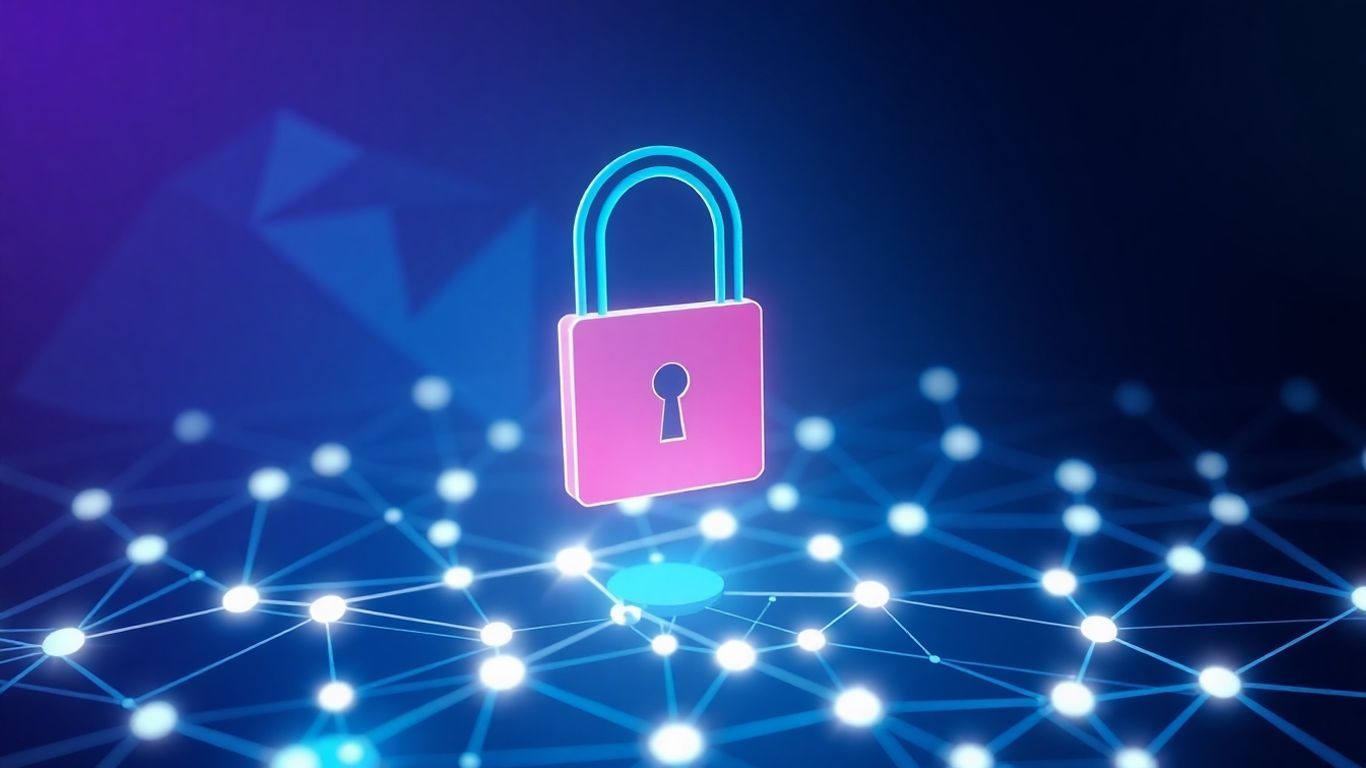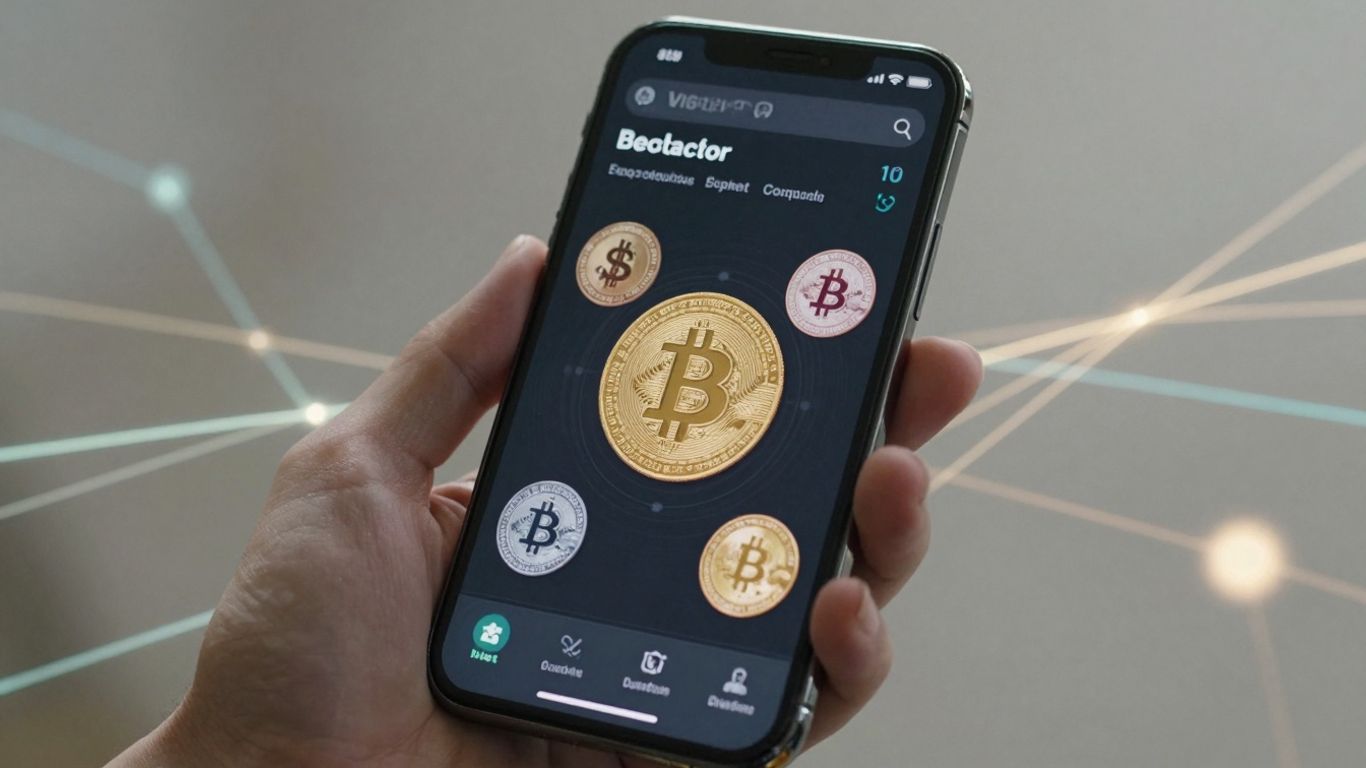[ newsletter ]
Stay ahead of Web3 threats—subscribe to our newsletter for the latest in blockchain security insights and updates.
Thank you! Your submission has been received!
Oops! Something went wrong. Please try again.
Master blockchain security audits with this deep dive into protocol vulnerabilities. Learn advanced techniques, tools, and best practices.





So, you're building something on the blockchain, huh? That's pretty cool. But let's be real, keeping it safe is a big deal. Billions have been lost because of security holes, and nobody wants that. That's where blockchain security audits come in. Think of them as the security guards for your digital money and code. We'll look at how these audits work, what tools you can use, and what's coming next to keep your projects from becoming another sad news story.

You know, blockchains are often talked about like they're Fort Knox, practically unhackable. But then you hear about billions of dollars vanishing from apps built on them. How does that even happen? It's a bit of a head-scratcher, right? The main culprit isn't usually the blockchain itself, but rather the programs running on it – we call them smart contracts.
This whole situation is kind of a paradox. Blockchains are designed to be secure and transparent, but the applications built on top can have weak spots. These smart contracts are like tiny programs that live on the blockchain. They can't be easily changed once they're out there, and when they're handling serious money, any little bug can turn into a big problem. It’s like building a house with a solid foundation but using flimsy materials for the walls – the whole structure is at risk.
Smart contracts are the workhorses of many blockchain applications, especially in areas like decentralized finance (DeFi) and NFTs. They automate agreements and transactions without needing a middleman. Think of them as self-executing contracts where the terms are written directly into code. Because they run on the blockchain, they inherit some of its security features, but they also introduce their own set of risks. The immutability that makes blockchains secure also makes fixing bugs in smart contracts incredibly difficult.
When we talk about smart contracts on platforms like Ethereum, one language comes up a lot: Solidity. It's the most common language for writing these contracts. While it's powerful, it also has its quirks that developers need to be aware of. Mistakes in Solidity code can lead to vulnerabilities that attackers can exploit. Some common issues include:
Understanding these core vulnerabilities is the first step. It's not just about knowing the theory; it's about recognizing how these flaws can be exploited in real-world scenarios. Many of these issues stem from the unique way blockchains operate and the nature of the code that runs on them.
For instance, a clever way to hide payments while still allowing for audits involves using a privacy committee, which adds another layer to consider when looking at transaction privacy and auditability. This paper presents a new confidentiality protocol designed for this purpose.
When we talk about finding bugs in blockchain stuff, especially the core parts like Layer 1 protocols and those all-important smart contracts, fuzzing is a technique that really shines. It’s basically about throwing a ton of weird, unexpected, or just plain wrong data at a system to see if it breaks. Think of it like poking a complex machine with a stick in all sorts of random places to find a weak spot. This is super useful because, let's be honest, nobody can manually test every single possible input combination. Fuzzing helps us find those tricky edge cases that could lead to big problems down the line.
Layer 1 protocols are the absolute foundation of any blockchain. They handle everything from how transactions are processed to how the network agrees on things (consensus). Because they're so central, any weakness here can be a disaster. Fuzzing L1 protocols often means focusing on the virtual machines (VMs) that run the code. We're looking for things like memory leaks, unexpected crashes, or ways to trick the VM into doing something it shouldn't. It's a tough job because these systems are so complex, but fuzzing gives us a way to explore parts of the code that manual testing might miss.
Virtual machines on a blockchain are like the engines that run everything. If the engine has a flaw, the whole car can stop working, or worse. Fuzzing VMs involves creating a lot of varied inputs to see how they handle them. We want to see if they crash, if they get stuck in loops, or if they can be made to execute unintended code. This is especially important for VMs that handle smart contracts, as they are a common target for attackers.
Smart contracts are the self-executing agreements that power a lot of decentralized applications, especially in DeFi. They're written in code, and like any code, they can have bugs. Fuzzing smart contracts is all about generating inputs that might trigger vulnerabilities like integer overflows, reentrancy attacks, or denial-of-service conditions. The goal is to find these issues before the contract is deployed and potentially causes financial losses. We often use tools that can generate inputs, run them against the contract, and then analyze the results to spot anything suspicious.
Here's a quick look at how smart contract fuzzing generally works:
Stateful fuzzing, which remembers the system's condition from one test to the next, is particularly effective for finding complex bugs in blockchains that rely on maintaining state over time. It mimics real-world interactions more closely than stateless fuzzing.
While fuzzing is powerful, it's not a magic bullet. It can be time-consuming, and figuring out the right way to 'fuzz' a specific protocol or contract takes some know-how. Plus, once a bug is found, someone still has to fix it. But for finding those hidden, hard-to-reach vulnerabilities, fuzzing is an indispensable tool in the security auditor's toolkit.
Alright, so you've got your blockchain project humming along, and now it's time to make sure it's not a security disaster waiting to happen. This is where audit tools come into play. Think of them as your digital security guards, but they're not always perfect. They're super helpful for spotting the obvious stuff, like simple coding mistakes or known security holes. But relying on them alone? That's like trying to build a house with just a hammer – you'll miss a lot of important steps.
These tools can scan through tons of code really fast. They're programmed to look for specific patterns that often mean trouble. This is great for catching things like:
They can process way more code than a human ever could in the same amount of time. This initial sweep is a big time-saver, pointing you in the right direction for deeper investigation. However, they sometimes get it wrong, flagging things that aren't actually problems. This is called a "false positive," and it can send you down rabbit holes looking for issues that don't exist. It's like your smoke detector going off when you're just making toast – annoying and a waste of time.
Some of these tools can feel like you're trying to program a VCR from the 90s. That's why a good tool needs to be easy to use. You want something that shows you the problems clearly, without making you dig through pages of confusing text. A clean interface means:
If a tool is too complicated, people won't use it properly, or they'll get frustrated and give up. The goal is to make security checks accessible, not just for the super-geeks.
Nobody wants to jump between a bunch of different programs just to check their code's security. The best tools can plug right into the software you're already using to write your code, like Remix or Truffle. This means you can run security checks without leaving your coding environment. It makes security a natural part of the development process, rather than something you tack on at the end. It's like having a security guard standing right next to you as you code, always keeping an eye out.
The real power of these tools comes when you understand their limitations. They are assistants, not replacements for human judgment. A skilled auditor uses the tool's findings as a starting point, applying their own knowledge to confirm real threats and dismiss false alarms. Without this human oversight, you risk either missing critical vulnerabilities or wasting precious time on non-issues.
Remember, these tools are just one piece of the puzzle. They help, but they don't do all the work for you. You still need smart people who know what they're doing to interpret the results and make the final calls.

Look, automated tools are great. They can scan through tons of code really fast and catch the obvious stuff, like simple mistakes or known vulnerabilities. It's like having a super-fast assistant who never gets tired. But here's the thing: they can't catch everything. They often miss the trickier, more subtle issues that require human brains to spot. Think about logical flaws or problems with how the system is supposed to work in the real world – a tool might just breeze right past those.
That's why you really need to mix it up. Use the automated tools for the heavy lifting, the initial sweep. Then, bring in human auditors to do the deep dive. They can look at the code with a critical eye, understand the project's goals, and find the kinds of bugs that automated scanners just aren't built to find. It’s about getting the best of both worlds.
The blockchain world moves at lightning speed. New attack methods pop up constantly, and what was secure yesterday might not be today. So, your audit tools and processes can't just sit there gathering dust. You've got to keep them updated. This means making sure your software has the latest security patches and vulnerability definitions. It also means staying on top of what's new in the security landscape.
Think of it like this:
It’s a continuous effort, not a one-and-done deal. You need to be prepared to adapt.
Even with the best tools and the most up-to-date processes, a lot of the success of an audit still comes down to the people doing it. You can have all the fancy software in the world, but if the person using it doesn't really know what they're doing, it's not going to be very effective. It's like giving a chef the finest ingredients but no cooking skills – the meal won't turn out great.
This means investing in training your team. They need to understand not just how to run the tools, but how to interpret the results, how to spot potential issues that the tools might miss, and how to think critically about the system's overall security. A skilled auditor can connect the dots in ways that automated systems can't. They're the ones who can really assess the security of external code integrations.
The effectiveness of any blockchain security audit hinges significantly on the skill and diligence of the human auditors involved. While tools provide valuable assistance, they are not a substitute for critical thinking, domain knowledge, and a proactive approach to identifying complex vulnerabilities.
The world of blockchain security is always on the move, and auditing is no different. We're seeing some pretty cool shifts happening that are making audits smarter and more effective. It's not just about finding bugs after the fact anymore; it's about getting ahead of them.
Artificial intelligence and machine learning are starting to really make their mark. Think of it like having a super-smart assistant that can sift through code way faster than any human. These tools can learn from past vulnerabilities, spot patterns, and even predict where new problems might pop up. This proactive approach means we can catch issues before they even become a headache. It's still developing, but the potential for AI to speed up audits and find things humans might miss is huge.
Instead of just doing a check-up once in a while, the trend is moving towards constant vigilance. Real-time monitoring means systems are being watched 24/7 for any weird activity. This could involve:
This kind of setup helps catch attacks as they're happening, giving teams a chance to react fast and stop damage before it gets out of hand. It's like having a security guard who never sleeps.
Traditional audits often involve a single company or a small group. But there's a growing interest in spreading the work around. Decentralized auditing means more people can get involved, which can make the whole process more open and trustworthy. This could look like:
This way, you get more eyes on the code, bringing different viewpoints and skills to the table. It really fits with the whole idea of blockchain, doesn't it? It's about building a more robust and reliable system for everyone, and it's a big part of how we'll see financial auditing evolve.
The future of blockchain auditing isn't just about better technology; it's about a shift in mindset. It's about seeing security as a continuous process, not just a one-time check. It's about building a culture of security within the blockchain community.
Beyond just writing secure code, a strong blockchain project needs layers of defense built into its ecosystem. Think of it like a castle – you need strong walls, but also watchtowers, patrols, and a system for dealing with spies. In the blockchain world, these defenses come in the form of security audits, bug bounty programs, and clear vulnerability disclosure policies.
Security audits are like getting an independent inspection of your project's code and design. Specialized firms or experienced individuals go through everything with a fine-tooth comb, looking for weaknesses. They're great for catching obvious flaws and giving you a professional opinion on your security posture at a specific point in time. Many projects, especially in ecosystems like Cosmos, regularly engage auditors to review their core components and smart contracts. However, it's important to remember that an audit is a snapshot. It can't guarantee that no bugs exist, and the scope is usually defined beforehand. The findings are super helpful for making improvements, and sometimes, publishing the audit report can build trust with the community.
While audits are proactive checks, bug bounties are about continuous, crowd-sourced security. You set up a program that rewards people for finding and reporting vulnerabilities. This is a fantastic way to keep security researchers engaged with your project long-term. Many chains and applications run these programs, sometimes offering rewards that can be quite substantial for critical bugs. It's a signal that the project takes security seriously. Some programs are becoming more formal, with requirements like identity verification and rewards that might be vested over time, but the core idea is to pay for security discoveries.
Having a clear plan for what happens when a vulnerability is found is just as important. This is where coordinated vulnerability disclosure (CVD) policies come in. Most mature projects have a SECURITY.md file that outlines how to report issues privately. The goal is to allow the project team to fix the problem without it being publicly exploited. This usually involves a period where the vulnerability is kept secret while a patch is developed and deployed, followed by a coordinated announcement. It's a delicate dance, but it's vital for protecting users and the network.
Building a secure blockchain isn't a one-time task; it's an ongoing commitment. Combining formal audits with active bug bounty programs and a transparent disclosure policy creates a robust defense system that benefits everyone involved.
So, we've gone through a lot about finding problems in blockchain code. It's clear that tools can help a lot, but they aren't the whole story. You still need smart people who know what they're doing to look at the results and figure out what's really going on. Think of these tools as a helpful assistant, not the boss. Keep learning about new ways to find bugs and protect your projects. The blockchain world changes fast, so staying updated is key to keeping things safe.
A blockchain vulnerability is like a hidden weak spot in a blockchain system or its programs (called smart contracts). These weak spots can be used by bad actors to steal money or cause problems. Think of it like a crack in a castle wall that an enemy could sneak through.
Smart contracts are like tiny computer programs that run on the blockchain. They often handle important things like money. If there's a mistake or a bug in a smart contract, it can be a big problem because they can't be easily changed once they're running, and a flaw could lead to losing a lot of digital money.
Fuzzing is a way to test computer programs by feeding them lots of random or unexpected information. It's like poking and prodding a system to see if it breaks or acts strangely. For blockchains, fuzzing helps find hidden bugs that developers might not have thought of, making the system safer.
Blockchain audit tools are super helpful for finding common problems automatically. However, they aren't perfect and can sometimes miss tricky issues or flag things that aren't actually problems. It's best to use these tools along with skilled people who can review the code carefully.
This means that if someone finds a security problem, they tell the project team privately first. This gives the team time to fix the issue before making it public. It's like telling a store owner about a broken lock before a thief notices it, so they can fix it first.
Artificial Intelligence (AI) is starting to help make blockchain security better. AI can look at code really fast and learn from past mistakes to find potential problems that humans might miss. This can make security checks quicker and more effective, helping to prevent issues before they happen.


